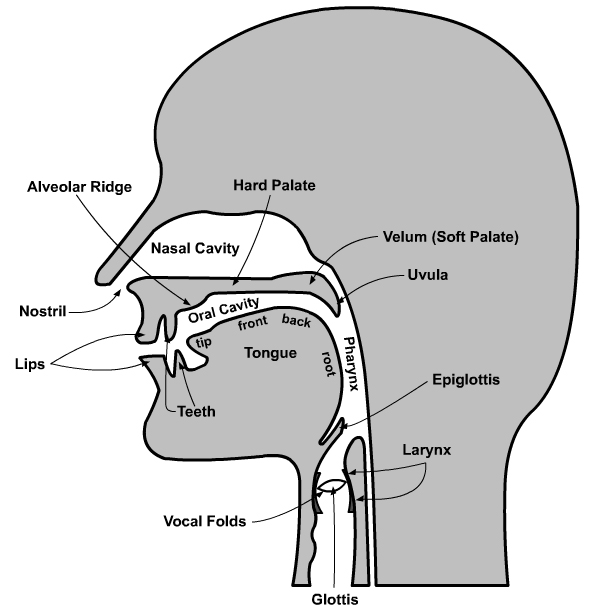Chapter 11.2 The organs of speech
When we speak, we use our vocal tracts to produce sounds, or phones. Before examining the sounds we make in English, it is helpful to understand what these organs are and how they are used.

In English, almost all sounds are made by obstructing the air in some way as it passes through the oral cavity. Air is expelled from the lungs, up through the glottis, past the vocal cords. The vocal cords are two thin membranes that stretch across the larynx. They open when we breath, but they vibrate against each other when we make certain sounds (called “voiced” sounds), as you can see in the following videos:
Once the air has passed the vocal cords, it is restricted or obstructed, often by some part of the tongue as it is placed near or against various parts of the oral cavity. These places include the lips, the teeth, the hard alveolar ridge directly behind the teeth, the long, concave roof of the mouth, called the palate or sometimes the hard palate, and then the velum, also called the soft palate. For most sounds the velum closes the passage into the nasal cavity, but for nasal sounds the passage is left open so that air can resonate there.
In this video of two people, an opera singer and a beat boxer, you can see how the speech organs move to create different sounds. As you watch, concentrate on the movements of the tongue — notice where and how it hits against various parts of the mouth, or how it shapes itself to produce different vowels. After completing the entire section on phonology, you might want to come back and watch it again.

